
Head of Medusa, Florence Perseus and medusa, Medusa art, Statue
Benvenuto Cellini, Perseus with the Head of Medusa, 1545-1554, Piazza della Signora, Florence, Italy. Villa Campestri. Benvenuto Cellini's Perseus and the Head of Medusa is a sculpture that is commonly overlooked. In fact, it could be the most regularly overlooked work of art in the world.
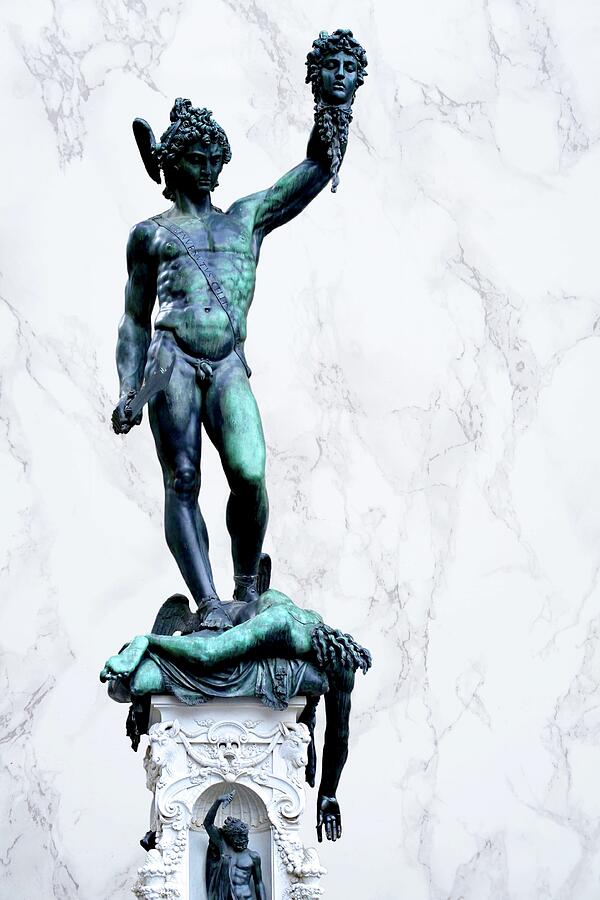
Perseus holding the head of Medusa by Benvenuto Cellini, Florence, Italy. Photograph by Joe
1545-54. Bronze, height 550 cm. Loggia dei Lanzi, Florence. Cellini's work in bronze is much more interesting than his work in marble, and this is clearly demonstrated by Perseus with the Head of Medusa. His posthumous fame is largely linked to this statue and to the passionate description of its casting that appears in Vasari's Vita; this.

Perseus Holding the Head of Medusa.Ο Περσέας κρατά το κεφάλι της Μέδουσας. Statue, Greek
Perseus, in Greek mythology, the slayer of the Gorgon Medusa and the rescuer of Andromeda from a sea monster. Perseus was the son of Zeus and Danaë, the daughter of Acrisius of Argos. As an infant he was cast into the sea in a chest with his mother by Acrisius, to whom it had been prophesied that he would be killed by his grandson.

Perseus with the Head of Medusa is a bronze sculpture made by Benvenuto Cellini in the period
Cellini's Perseus and Medusa at the Loggia dei Lanzi, 1554 @ Piazza della Signoria, Florence, Italy. Ref. (a-63). The sculpture is made of solid bronze. And some pewter, including Cellini's platters, dishes, and bowls which he threw in during the casting process when it looked like there wouldn't be enough molten metal to fill his mould.
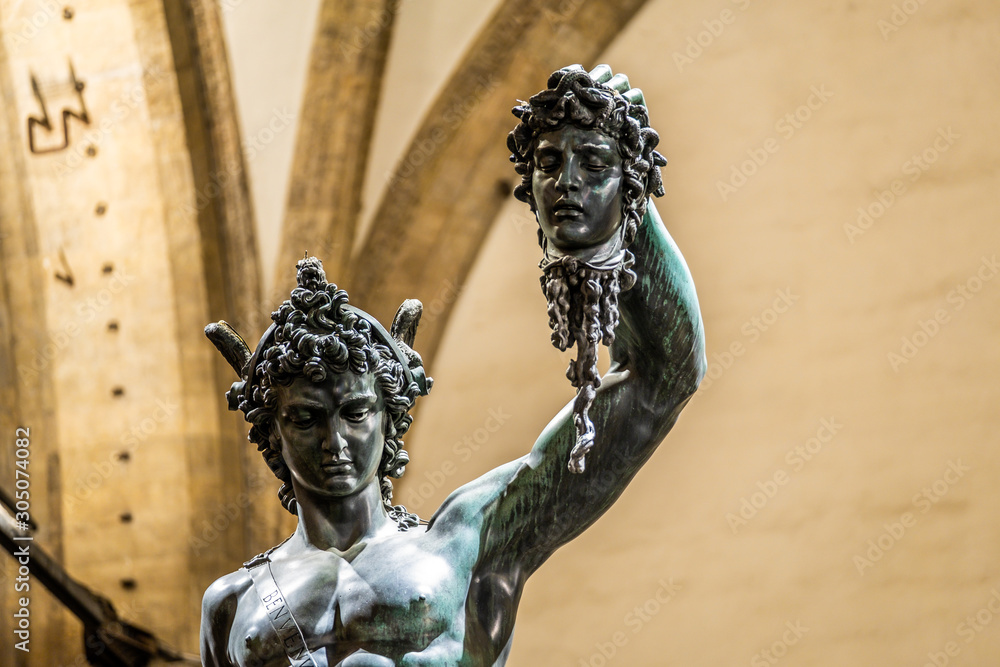
Bronze statue of Perseus holding the head of Medusa in Florence, made by Benvenuto Cellini in
The exhibition features replicas of the five bronze statues, including Perseus with the Head of Medusa (1552), created by Benvenuto Cellini (Italian, 1500-71) for the Piazza della Signoria in.
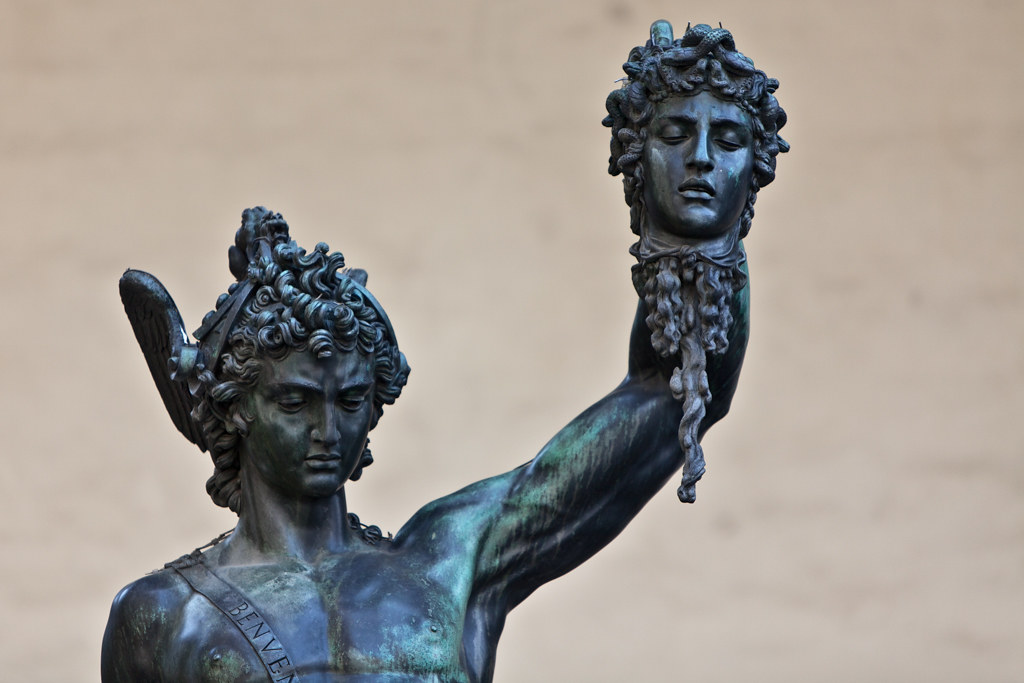
Perseus with the Head of Medusa Florence, Italy Thomas Leplus Flickr
Benvenuto Cellini, Perseus with the Head of Medusa, c. 1554, bronze (Loggia dei Lanzi, Piazza della Signoria, Florence). Created by Beth Harris and Steven Zucker. Questions Tips & Thanks Want to join the conversation? Sort by: Top Voted Tanner Perkin 10 years ago
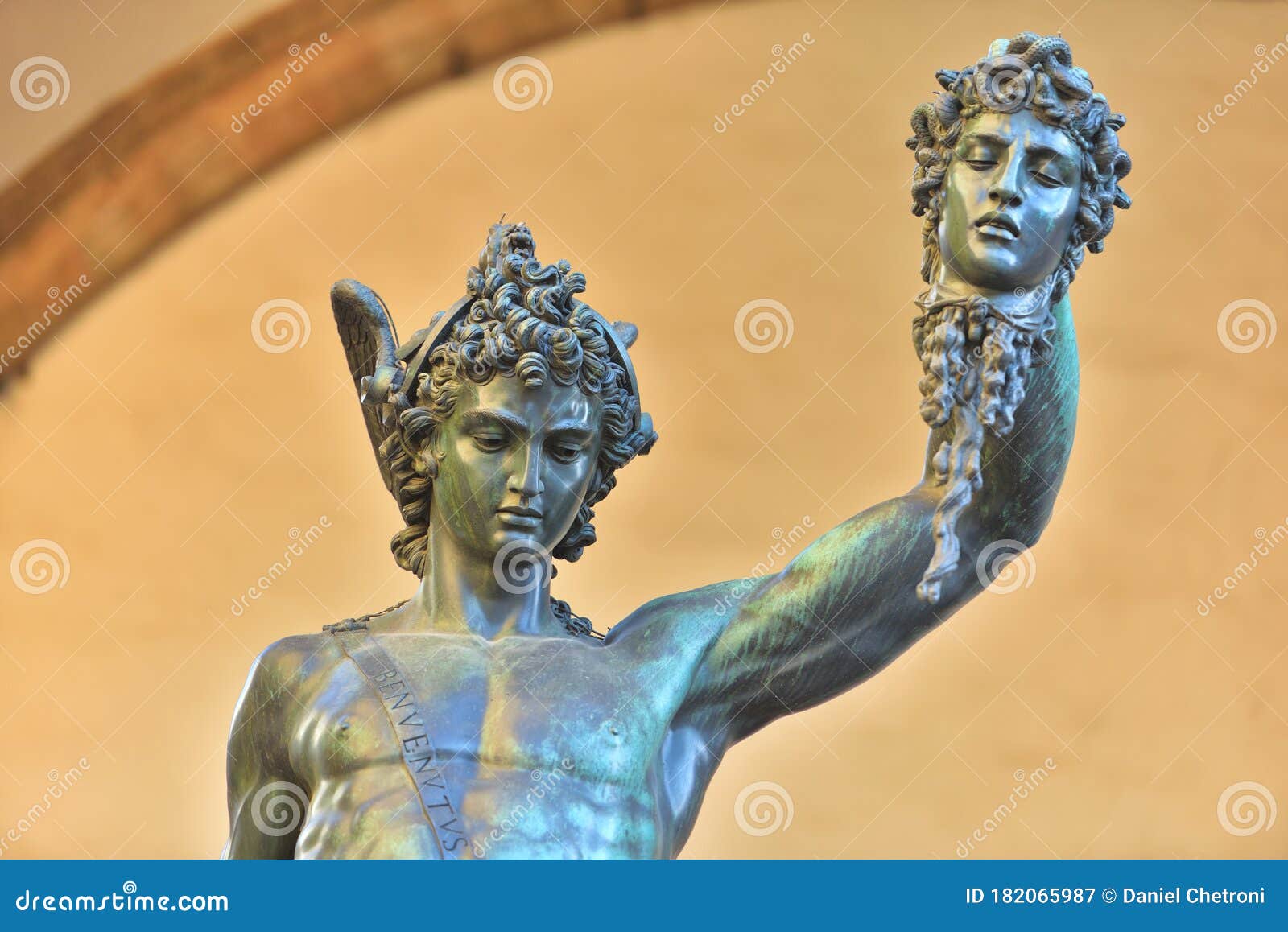
Ancient Style Sculpture of Perseus with the Head of Medusa in Florence, Italy Stock Image
Cellini's Perseus with the Head of Medusa dominates the left bay of this relatively small structure. It's full of amazing sculptures created by some of the most renowned artists in history. Loggia dei Lanzi / Sailko / Wiki Commons. 8. There are a large number of similar statues all around the world.
Perseus with the Head of Medusa Sculpture by Benvenuto Cellini Florence, Italy vsco
Benvenuto Cellini (/ ˌ b ɛ n v ə ˈ nj uː t oʊ tʃ ɪ ˈ l iː n i, tʃ ɛ ˈ-/, Italian: [beɱveˈnuːto tʃelˈliːni]; 3 November 1500 - 13 February 1571) was an Italian goldsmith, sculptor, and author.His best-known extant works include the Cellini Salt Cellar, the sculpture of Perseus with the Head of Medusa, and his autobiography, which has been described as "one of the most.

Bronze Perseus & Medusa in Piazza della Signoria. Florence, Italy Rae 12/28/13 Cinque Terre
Perseus with the Head of Medusa Benvenuto Cellini 16th century. The Metropolitan Museum of Art New York City, United States. Download this artwork (provided by The Metropolitan Museum of Art). Learn more about this artwork.. Florence. Italy. Myth. Mythology. Plaster. Google apps.

Perseus and Medusa Photograph by Brian Jannsen
Coordinates: 43.7692°N 11.2558°E Perseus with the Head of Medusa by Benvenuto Cellini Perseus with the Head of Medusa, in the Loggia dei Lanzi, Florence Perseus with the Head of Medusa is a bronze sculpture made by Benvenuto Cellini in the period 1545-1554.

Perseus and the Head of Medusa A Very Florentine Story
What does Perseus with the Head of Medusa symbolise? The beheaded Medusa underneath Perseus' feet represents the Republic that the Medici faction overthrew in 1434 under Cosimo, while the snakes coming out of the gorgon's body symbolise the disagreements in the city which threatened democracy.

Pin on Medusa
Title: Perseus with the Head of Medusa. Artist: After a model by Benvenuto Cellini (Italian, Florence 1500-1571 Florence) Date: 19th century. Culture: Italian. Medium: Plaster, gilt. Dimensions: H. 30 1/2 in. (77.5 cm.) Classification: Sculpture-Reproductions-Casts. Credit Line: Gift of the Estate of Joseph Breck, 1933. Accession Number: 33.166

Perseus With The Head Of Medusa Florence Italy HighRes Stock Photo Getty Images
Medusa With the Head of Perseus is a work of art that turns the old Greek mythological tale on its head, so to speak. It was sculpted by Italian artist Luciano Garbati who in his youth, would often see Benvenuto Cellini's Medusa and Perseus sculpture at the Loggia Dei Lanzi in Florence, close to his hometown.

Perseus & Medusa (detail), Benvenuto Cellini, 1554, Florentine, Mannerism, Late Renaissance
Benvenuto Cellini's bronze sculpture of Perseus and Medusa (1545-54), which stands under the left arch of the Loggia dei Lanzi, is one of the most beautiful works of art in Florence. The statue was commissioned by Duke Cosimo I de' Medici (r. 1537-74) and unveiled to the public on April 27th 1554. It illustrates the story of the Greek hero Perseus, who slew the monstrous Gorgon Medusa, whose.

Cellini Perseus with the head of Medusa. Statue was in the Piazza della Signoria in Florence
The statuary groups of Piazza della Signoria, in Florence, offer to us a fascinating insight on the way of thinking of the people who commissioned and created them during the Renaissance , and also how this way of thinking evolved over more than a century of time. Among these pieces, the "Perseus and Medusa " by Cellini (Fig. 49.1) is perhaps the one which brings the greatest wealth of.

Perseus by Cellini Loggia dei Lanzi Statue, Perseus and medusa, Greek mythology
Perseus with the Head of Medusa is a bronze sculpture made by Benvenuto Cellini in the period 1545-1554. The sculpture stands on a square base which has bronze relief panels depicting the story of Perseus and Andromeda, similar to a predella on an altarpiece. It is located in the Loggia dei Lanzi in the Piazza della Signoria in Florence, Italy.